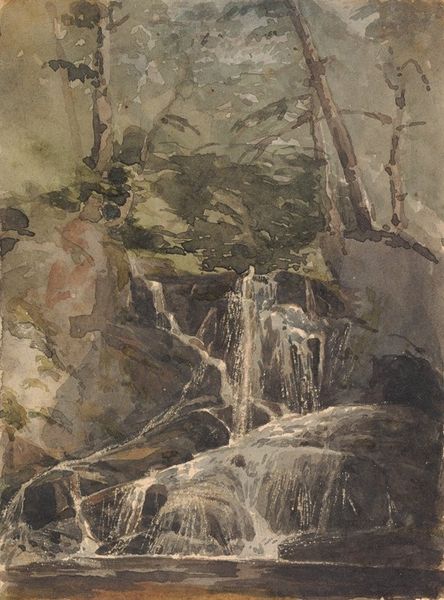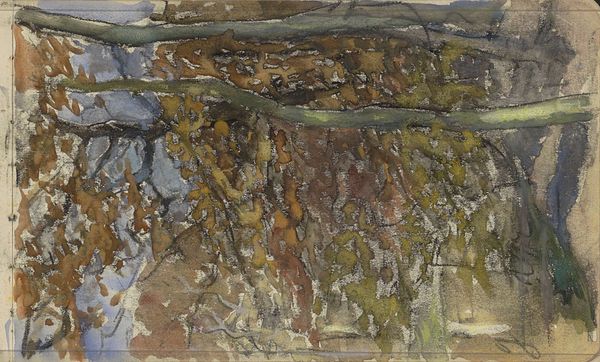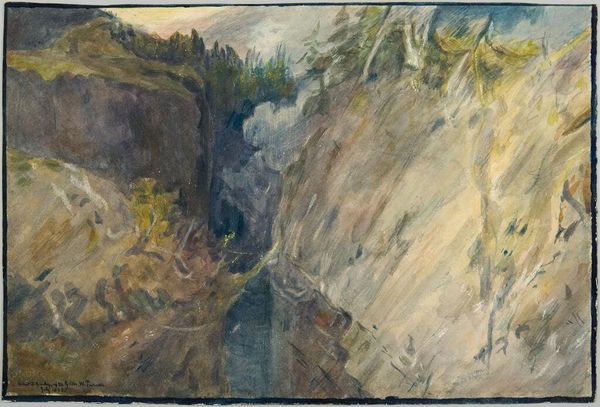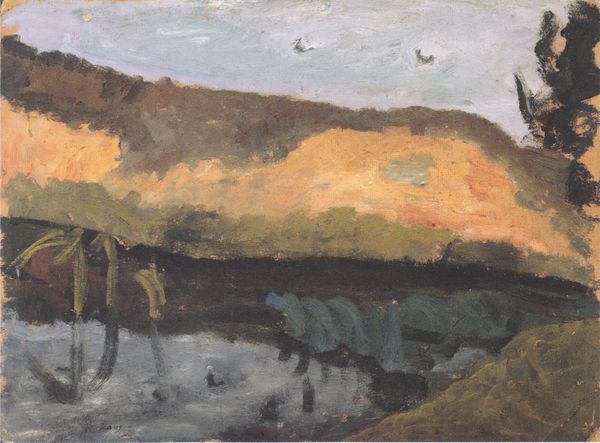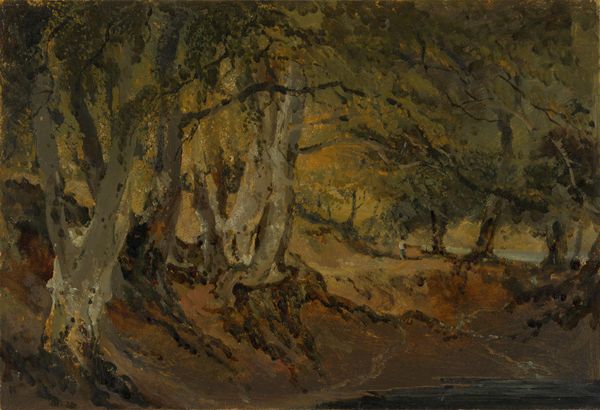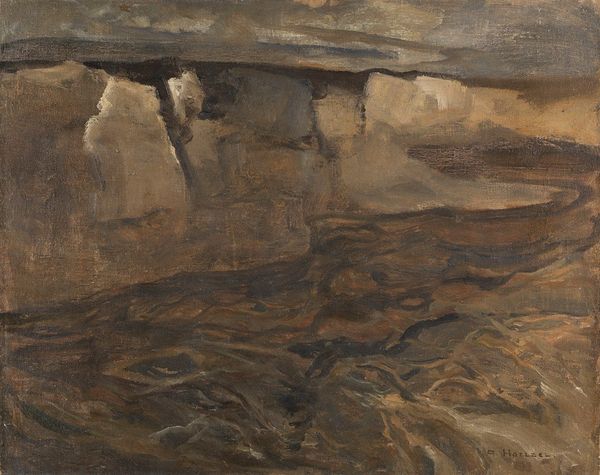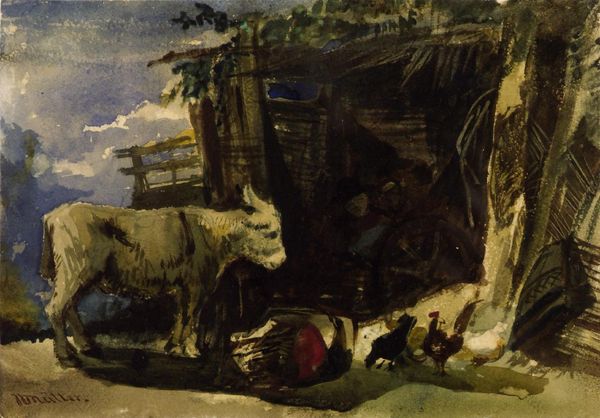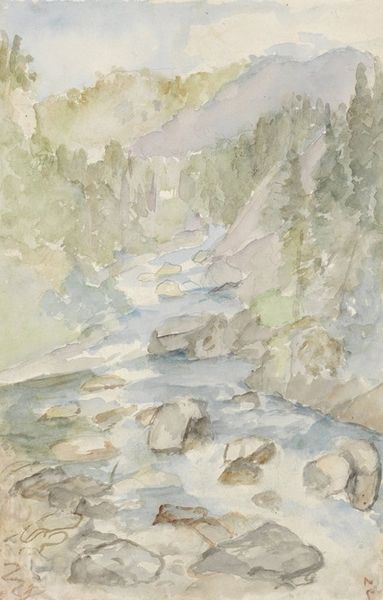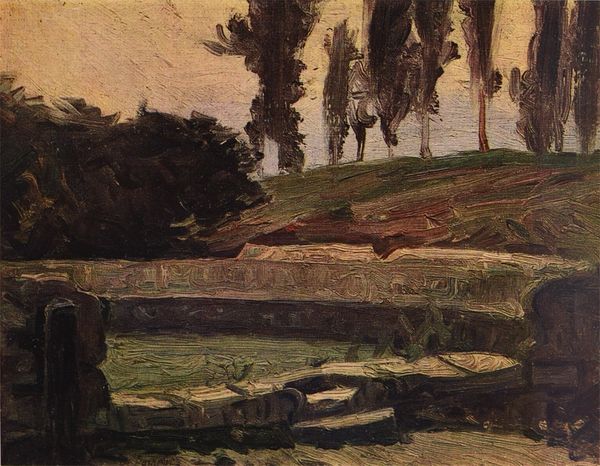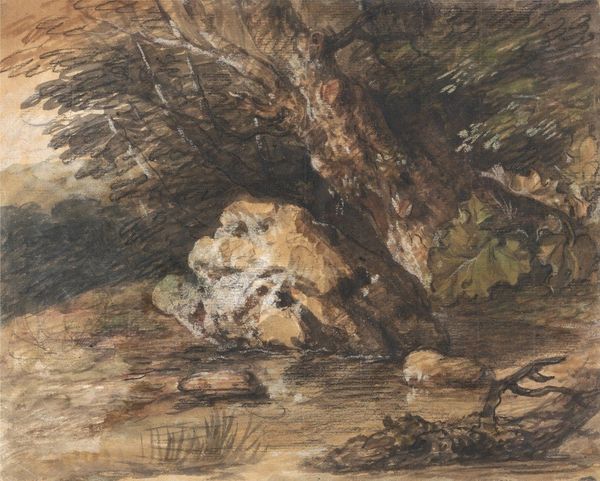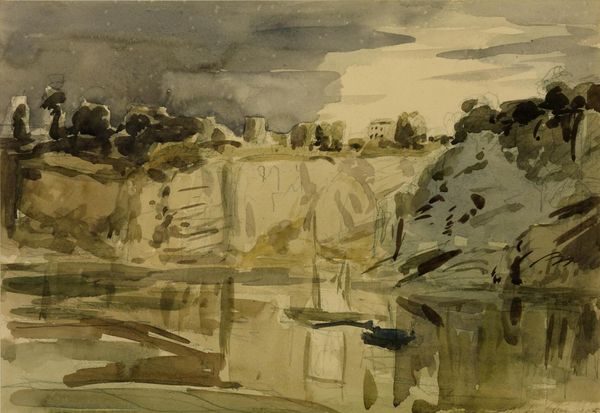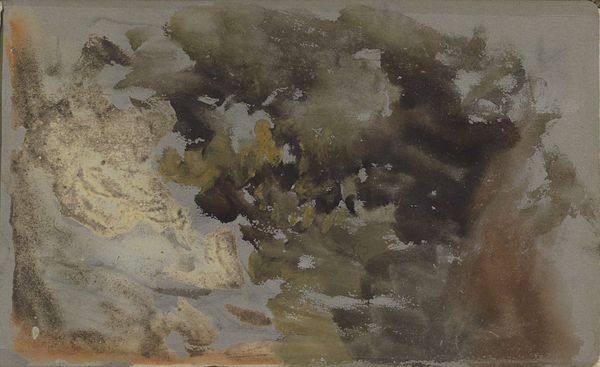
plein-air, watercolor
#
plein-air
#
landscape
#
watercolor
#
romanticism
#
abstraction
#
watercolor
Copyright: Public Domain: Artvee
Editor: Here we have “Rocky Landscape, Large Tree Trunk in Foreground” by Thomas Sully, and it's done with watercolor. There's a somber, almost oppressive mood that I pick up from the dark washes, even though it’s supposedly "plein-air." What strikes you about it? Curator: For me, it is the deliberate mark-making. Look closely. What does it reveal about Sully's engagement with the *process* of depicting nature? Was this a study, and how did this process differ for a painting? Editor: It almost seems like he’s less interested in photographic accuracy and more in capturing a feeling or… maybe just quickly rendering what’s in front of him with the materials he had at hand. Curator: Precisely! Consider the socioeconomic context: Was he making this for a patron, or exploring the capabilities of the watercolor itself? Was he perhaps reflecting on the rapidly changing landscapes caused by industrialization? The dark washes mirror what artists were doing during times of the Industrial Revolution in Europe; reflecting somber palettes when factories were pumping soot into the air, into nature. Editor: So the materiality of the artwork itself -- the loose watercolor technique -- combined with the depiction of the landscape can tell us about broader cultural and economic shifts? Curator: Absolutely. It challenges this conventional idea of just beauty in landscapes. By understanding how this landscape watercolor was *made*, we can glean insights into consumption and changing modes of art production itself! Editor: It is not only about the “what”, it is also the “how” and “why” behind the art making! I never really thought about landscape in relation to industrialization and production this way! Thanks. Curator: My pleasure! Hopefully it's given you another way of looking at materiality within art history.
Comments
No comments
Be the first to comment and join the conversation on the ultimate creative platform.
